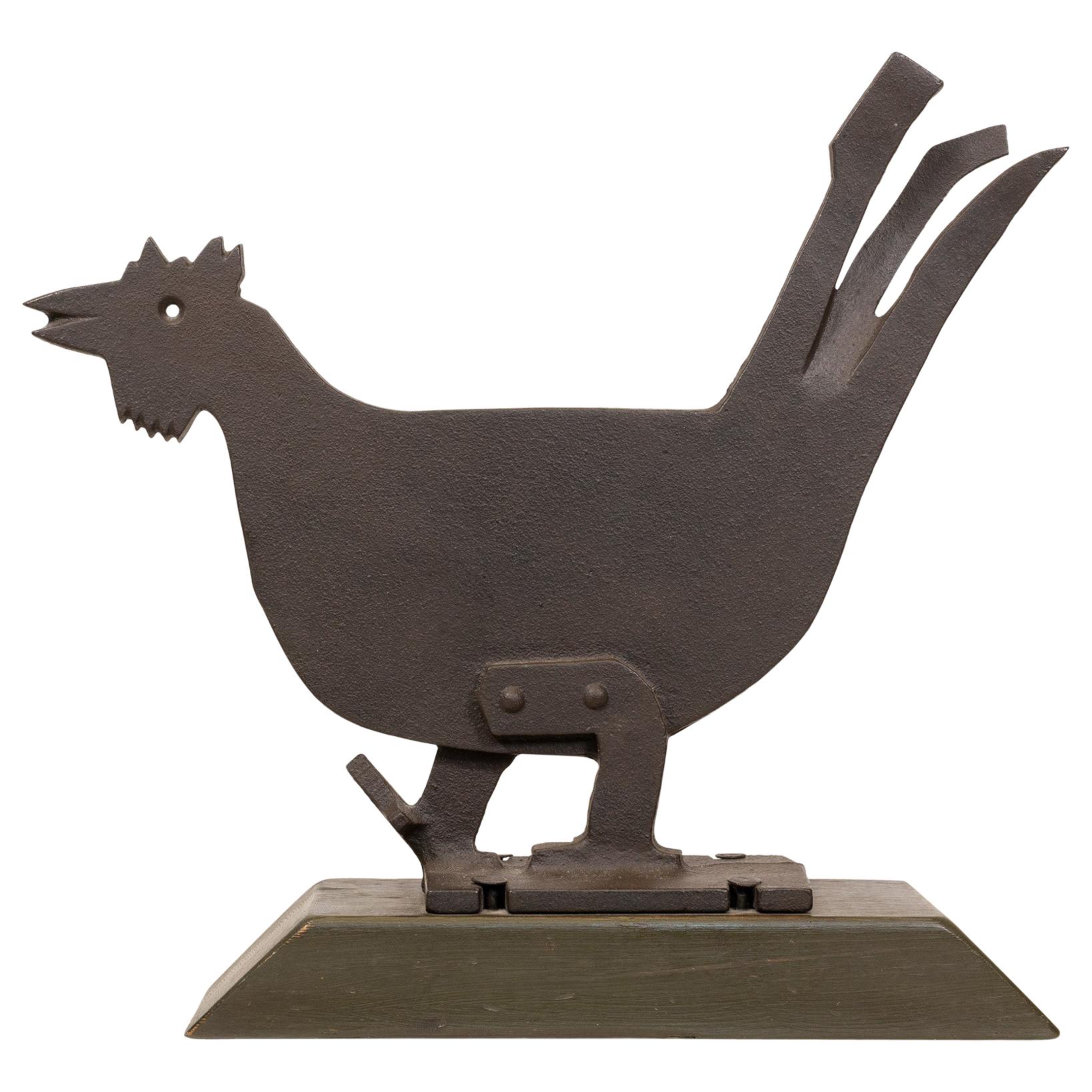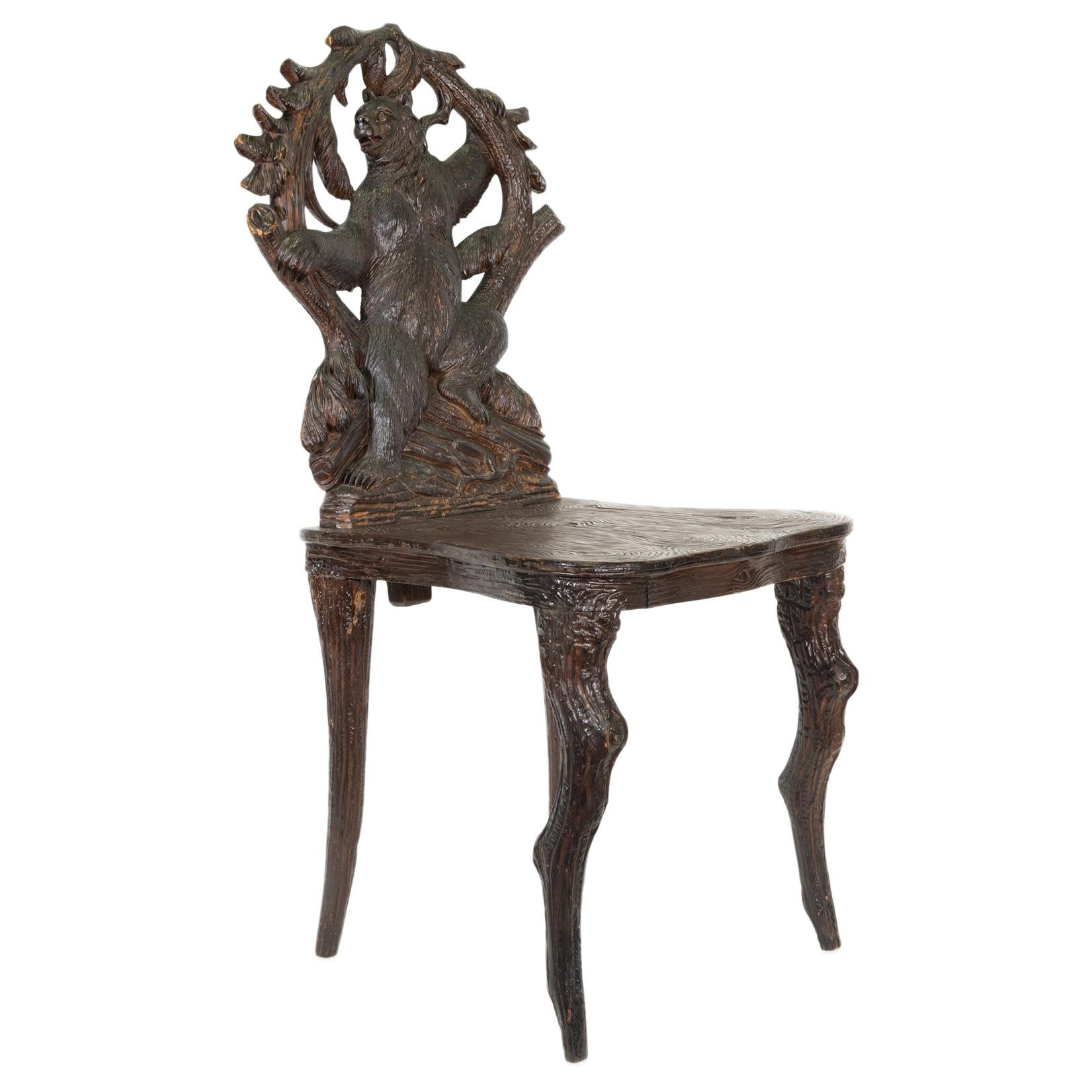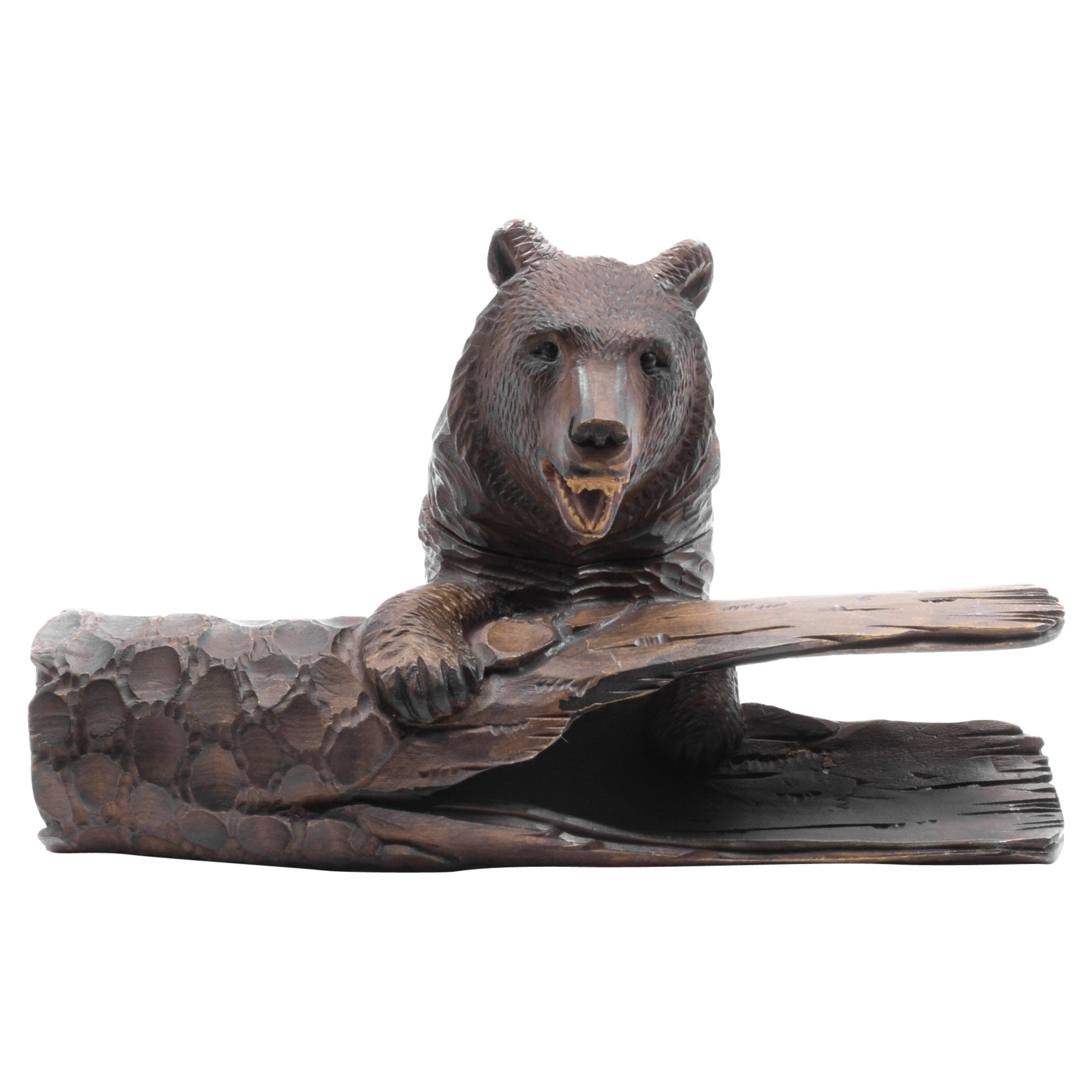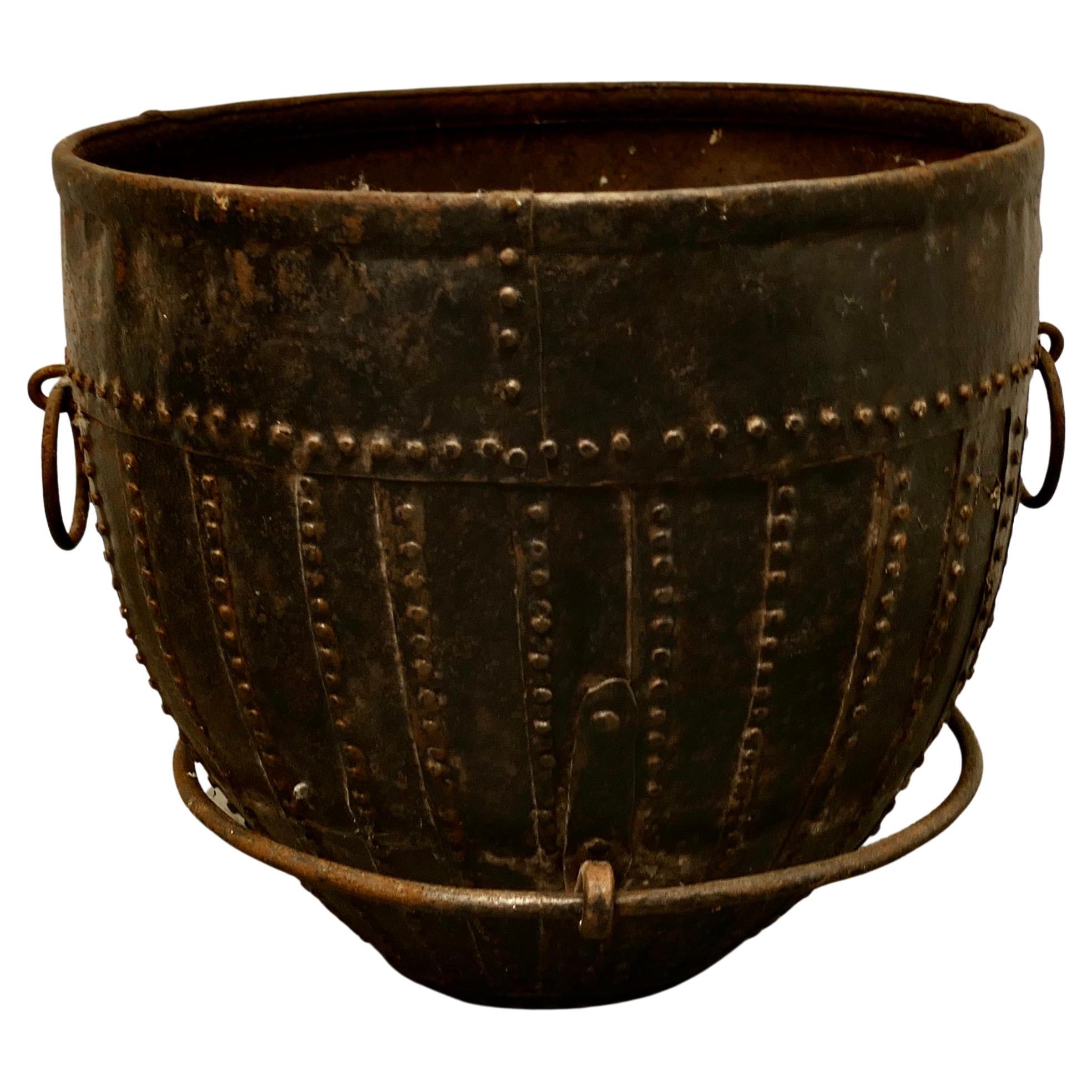Want more images or videos?
Request additional images or videos from the seller
1 of 7
Megalithic Stela
About the Item
A tall anthropomorphic stele of carved granite, divided into two distinct regions of the body and face. The body is a single unarticulated block, but the facial features are outlined with strong carved lines. A T-shape marks the position of the nose and eyebrows, with two small horizontal lines for the eyes and a third, slightly deeper, line for the mouth.
Stele of this kind are represented in many major traditions in prehistoric Europe. These include: southern Ukraine and Moldova, regions of the Italian and Swiss Alps, Lunigiana in the Apuan Alps, Southern France, Sardinia, Corsica, Iberia, Southern Italy, Malta, the Paris Basin, Channel Islands, Germany, Hungary, and Bulgaria. Due to the scarcity of the archaeological record, it is impossible to estimate the total numbers of stelae in each group, but the largest known groups are those from Lunigiana and Ukraine, which each have over 100 known examples.[1] Although each traditional has its own characteristics, there are still many commonalities across geographically distinct localities. The question of how such widely dispersed but clearly related traditions can have come about and continued for over a thousand years (between about 3500 and 2000 B.C.) is still something of a mystery.
Most stele are removed from their archaeological context before they are found – it is not uncommon to find them reused in modern architectural structures. Those that are found in context are generally in monumental, often funerary sites. Some are used as grave or mound markers, and others have been found within tombs and burial chambers, or in groups at ritual sites. They have therefore been interpreted as representing gods or ancestral figures. Due to their scale and materials, it would have been a large undertaking to produce one of these stele, which was probably carried out by groups within the community rather than single individuals.
[1] John Robb, ‘People of Stone: Stela, Personhood, and Society in Prehistoric Europe’, Journal of Archaeological Method and Theory, 16:3 (September 2009), pp. 169-170.
Provenance:
Previously on the European art market, from at least 1970.
Previously in the Private Collection of Dr. Wolfgang Meyn, Soest, Germany, acquired from the above in 1972.
Private Collection of Mr. Rob Fens, The Netherlands, acquired from the above.
Spanish Art Market, 2023
ALR: S00235754, with IADAA Certificate, this item has been checked against the Interpol database.
- Dimensions:Height: 26.38 in (67 cm)Width: 11.82 in (30 cm)Depth: 5.91 in (15 cm)
- Materials and Techniques:
- Place of Origin:
- Period:
- Date of Manufacture:3rd Millennium B.C.
- Condition:Wear consistent with age and use.
- Seller Location:London, GB
- Reference Number:
About the Seller
5.0
Vetted Seller
These experienced sellers undergo a comprehensive evaluation by our team of in-house experts.
Established in 1910
1stDibs seller since 2020
- ShippingRetrieving quote...Ships From: London, United Kingdom
- Return PolicyThis item cannot be returned.
More From This SellerView All
- Ushabti for ImenmesLocated in London, GBA mummiform ushabti in blue faience. Four registers of hieroglyphic characters are painted around the lower half of the ushabti, with a vertical column of hieroglyphs in the centre o...Category
Antique 15th Century and Earlier Egyptian Egyptian Antiquities
MaterialsFaience
- Two Glass Inlay PairsLocated in London, GBTwo pairs of two halves from the same bar, finely detailed, with pointed ears and eyebrows, opaque yellow face, opaque red on the mouth, nose, eyes and ears, translucent cobalt blue edges to the mouth, nose and ears, with translucent emerald green leaves above and between the translucent cobalt blue brows and eye line, translucent pink pupils, with translucent cobalt blie and opaque white snake scales below the face, in translucent cobalt blue matrix, cut in the lower part of a cartouche design. These rare heads might represent the Agathos Daimon, the tutelary deity of Alexandria, who was also identified with Serapis, the male counterpart of Isis-Thermouthis (who in turn was a graecisized form of the early snake harvest goddess Renenutet). In a statue of Isis-Thermouthis in Alexandria museum (no. 25773, ex-collection King Farouk I), reproduced in Gotten, Pharaonen, no. 151, the snake goddess...Category
Antique 15th Century and Earlier Egyptian Antiquities
MaterialsGlass
- South Arabian Head of a WomanLocated in London, GBA female head finely carved from evenly-coloured cream alabaster. The face features a strong chin, high rounded cheekbones, and large elliptical eyes deeply inset for inlays. The remains of the nose indicate that it was long, thin, and roughly triangular in form. A small, round mouth sits just below the nose. Deeply incised eyebrows follow the shape of the eyes, which are framed by unusual grooved canthi on either side, possibly to represent cosmetic eye paint. The supraorbital margins above the eyes are deeply carved, while the carving below the eyes is more subtle, smoothing the sockets into the rounded cheeks. The ears are formed from two arcs and a central sphere, and both lobes are pierced for earrings. The long hair frames the face below the ears, and is carved to create a rougher texture. There is a stock sticker on the back of the neck. A fragment of the right shoulder remains. This suggests that the head was part of a larger sculpture, possibly a full figure (though this seems unlikely due to its relatively large scale) or, more likely, a bust. This head is stylistically aligned with those found at Timna, the capital of the ancient Yemeni kingdom of Qataban, which existed from the 1st millennium BC until the late 1st or 2nd centuries AD. Timna served as an important hub of the Incense Route, the camel caravan that transported incense from Arabia and India to ports on the Mediterranean Sea. Roman author and philosopher Pliny the Elder (23/24-79 AD) described Timna as a busy city with around 65 temples. Excavations in 1950 and 1951 by Wendell Phillips...Category
Antique 15th Century and Earlier European Antiquities
MaterialsAlabaster
- Bronze HoardLocated in London, GBDagger L: 27.8 cm, Luniform bronze, possibly a belt buckle L: 10.8 cm, Shield-shaped bronze with a point Diam: 6.5 cm, Pommel Diam: 3.7 cm, Violin-bow brooch L: 17.5 cm, P-Shape...Category
Antique 15th Century and Earlier European Classical Roman Antiquities
MaterialsBronze
- Anglo-Saxon Hanging BowlLocated in London, GBA very rare and near-complete copper-alloy hanging bowl and associated fittings. Crafted from a single sheet of bronze, the body of the bowl is curved, with a slightly recessed lip. ...Category
Antique 15th Century and Earlier English Antiquities
MaterialsBronze
- Statuette of the Goddess NeithLocated in London, GBBronze statue of the goddess Neith, striding, her left foot extended forward. Her left hand is extended forward and formally held a papyrus sceptre, a fragmentary ankh is visible in her right hand. She wears a close-fitting sheath dress, incised with a broad usekh collar, and carefully engraved bracelets and armlets. On her head is the Red Crown of Lower Egypt, decorated with vertical striations and restored spiral and spire. Her face is finely molded, with a broad upturned nose and electrum-overlaid eyes and eyebrows. Neith was one of the earliest recorded gods in the Egyptian pantheon, worshipped from early in the Predynastic era through to the arrival of Roman rule. A war goddess and goddess of weaving, she was the patron goddess of the Red Crown of Lower Egypt and the city of Zau (Sais, in the 5th Nome of Lower Egypt) in the Delta. A powerful and popular goddess, she was, according to the Iunyt (Esna) cosmology, the creator of the world and the mother of the sun, Ra. This made her the mother of all of the gods, who often came to her to settle their disputes. Her symbols are the bow and arrows and a sword and shield as a war goddess, a weaving shuttle as a funerary goddess, and the Red Crown of Lower Egypt as the goddess of creation and mother goddess. She is usually depicted as a woman wearing the Red Crown of Lower Egypt, however, she is occasionally depicted as a cow in connection with her role as the mother of Ra. The use of electrum, a naturally occurring alloy of gold and silver sometimes called ‘green-gold’, for the eyes speaks to the high status of the object. Electrum had been used by the Egyptians since at least the 3rd millennium B.C., but, give its rarity, was reserved for the most expensive and important objects. Most electrum used in Egypt was imported from Nubia, though some was found there. Published: Parke-Bernet Galleries, New York, February 25th, 1971, no. 70, illus. Sotheby’s, New York, June 5th, 1999, no. 31, illus. David Aaron Ltd...Category
Antique 15th Century and Earlier Egyptian Egyptian Antiquities
MaterialsBronze
You May Also Like
- American Rooster Sheet Iron Boot ScraperLocated in Coeur d'Alene, IDArts & Crafts stylized sheet iron rooster boot scraper on wooden base. Period: Mid-20th century Origin: United States Size: 12" H x 12" L. Family Owned & Operated Cisco’s Gallery d...Category
Antique Mid-19th Century American Sports Equipment and Memorabilia
MaterialsIron
- 19th Century Black Forest Carved Bear ChairBy Black ForestLocated in Coeur d'Alene, IDBlack Forest Swiss carved chair having bear on fallen log. Carved bear on lifting seat which once had a music box. Part of the Brienz collection pla...Category
Antique Late 19th Century Swiss Black Forest Chairs
MaterialsWood
- Black Forest Carved Bear with Pen InkwellBy Black ForestLocated in Coeur d'Alene, IDSwiss bear with log pen rest and inkwell. Published in "Black Forest Bears and Swiss Woodcarvings," plate 93a. Book included. In the 1800’s the wood carving...Category
Antique 19th Century Swiss Black Forest Inkwells
MaterialsWood
- Black Forest Carved Bear with Pen InkwellBy Black ForestLocated in Coeur d'Alene, IDWalking bear pen holder and inkwell. Published in "Black Forest Bears and Swiss Woodcarvings," plate 92a. Book included. In the 1800’s the wood carving industry of Switzerland started in the town of Brienz. By the end of the 1800’s it had become the driving force for this industry. Swiss wood carvers became world renown and featured at many international exhibitions. Period: 1900 Origin: Switzerland Size: 4" H x 7" W Family Owned & Operated Cisco’s Gallery deals in the rare, exceptional, and one-of-a-kind pieces that define the history of America and the Old West. Our pieces range from American Indian to Cowboy Western and include original items of everyday life, commerce, art, and warfare that tamed America’s frontier. Our 14,000 square foot gallery opened in 1996 in beautiful Coeur d’Alene, Idaho. Personal Service Cisco’s operates on old fashioned values – honesty and integrity, and all of our items are backed by our money back guarantee. We appreciate the opportunity to earn your business. Whether you desire assistance with a jewelry purchase, choosing a gift, identification, or even selling – we hope to be your trusted source. Black Forest, Brienz Collection, Carvings, Bears, Inkwells, Desk Accessories...Category
Antique 19th Century Swiss Black Forest Inkwells
MaterialsWood
- 19th Century North African Cooking Pot, Brutalist Log BasketLocated in Chillerton, Isle of Wight19th Century North African cooking pot, Brutalist log basket. Stud and Riveted Cooking Pot from North Africa, the vessel is made in hand forged ...Category
Antique Early 19th Century Brutalist Antiquities
MaterialsIron
- Kadjar Lacquered Paper Mache BoxLocated in Beuzevillette, FRBeautiful lacquered paper mache box decorated with imaginary animals (that look like cats) and plant motifs. The box seems to take the shape of a vege...Category
Early 20th Century Antiquities
MaterialsPaper
Recently Viewed
View AllMore Ways To Browse
Ukraine Antique
The Impossible Collection
Impossible Collection
Market Scale
Previously Owned Furniture
Antique Produce Scales
Antique Chambers
Antique Grave
Antique German Scales
Antique Market Scale
Alps Antique
Southern Folk
Southern Folk Art
Black Southern Folk Art
Spanish Netherlands
Ukraine Folk
Folk Art Monumental
Antique Maltese





